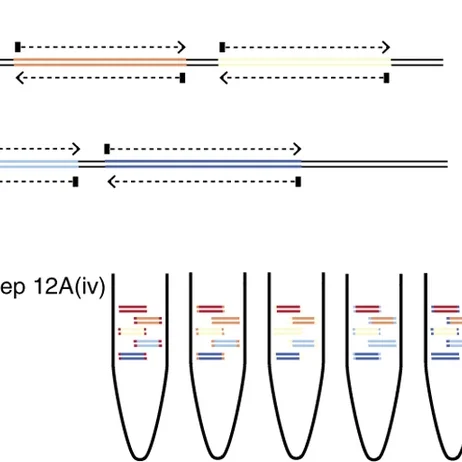Joshua Quick, Nathan D Grubaugh, Steven T Pullan, Ingra M Claro, Andrew D Smith, Karthik Gangavarapu, Glenn Oliveira, Refugio Robles-Sikisaka, Thomas F Rogers, Nathan A Beutler, Dennis R Burton, Lia Laura Lewis-Ximenez, Jaqueline Goes de Jesus, Marta Giovanetti, Sarah C Hill, Allison Black, Trevor Bedford, Miles W Carroll, Marcio Nunes, Luiz Carlos Alcantara Jr., Ester C Sabino, Sally A Baylis, Nuno R Faria, Matthew Loose, Jared T Simpson, Oliver G Pybus, Kristian G Andersen, Nicholas J Loman
Nature Protocols
May 24, 2017
ABSTRACT
Genome sequencing has become a powerful tool for studying emerging infectious diseases; however, genome sequencing directly from clinical samples (i.e., without isolation and culture) remains challenging for viruses such as Zika, for which metagenomic sequencing methods may generate insufficient numbers of viral reads. Here we present a protocol for generating coding-sequence-complete genomes, comprising an online primer design tool, a novel multiplex PCR enrichment protocol, optimized library preparation methods for the portable MinION sequencer (Oxford Nanopore Technologies) and the Illumina range of instruments, and a bioinformatics pipeline for generating consensus sequences. The MinION protocol does not require an Internet connection for analysis, making it suitable for field applications with limited connectivity. Our method relies on multiplex PCR for targeted enrichment of viral genomes from samples containing as few as 50 genome copies per reaction. Viral consensus sequences can be achieved in 1–2 d by starting with clinical samples and following a simple laboratory workflow. This method has been successfully used by several groups studying Zika virus evolution and is facilitating an understanding of the spread of the virus in the Americas. The protocol can be used to sequence other viral genomes using the online Primal Scheme primer designer software. It is suitable for sequencing either RNA or DNA viruses in the field during outbreaks or as an inexpensive, convenient method for use in the lab.

